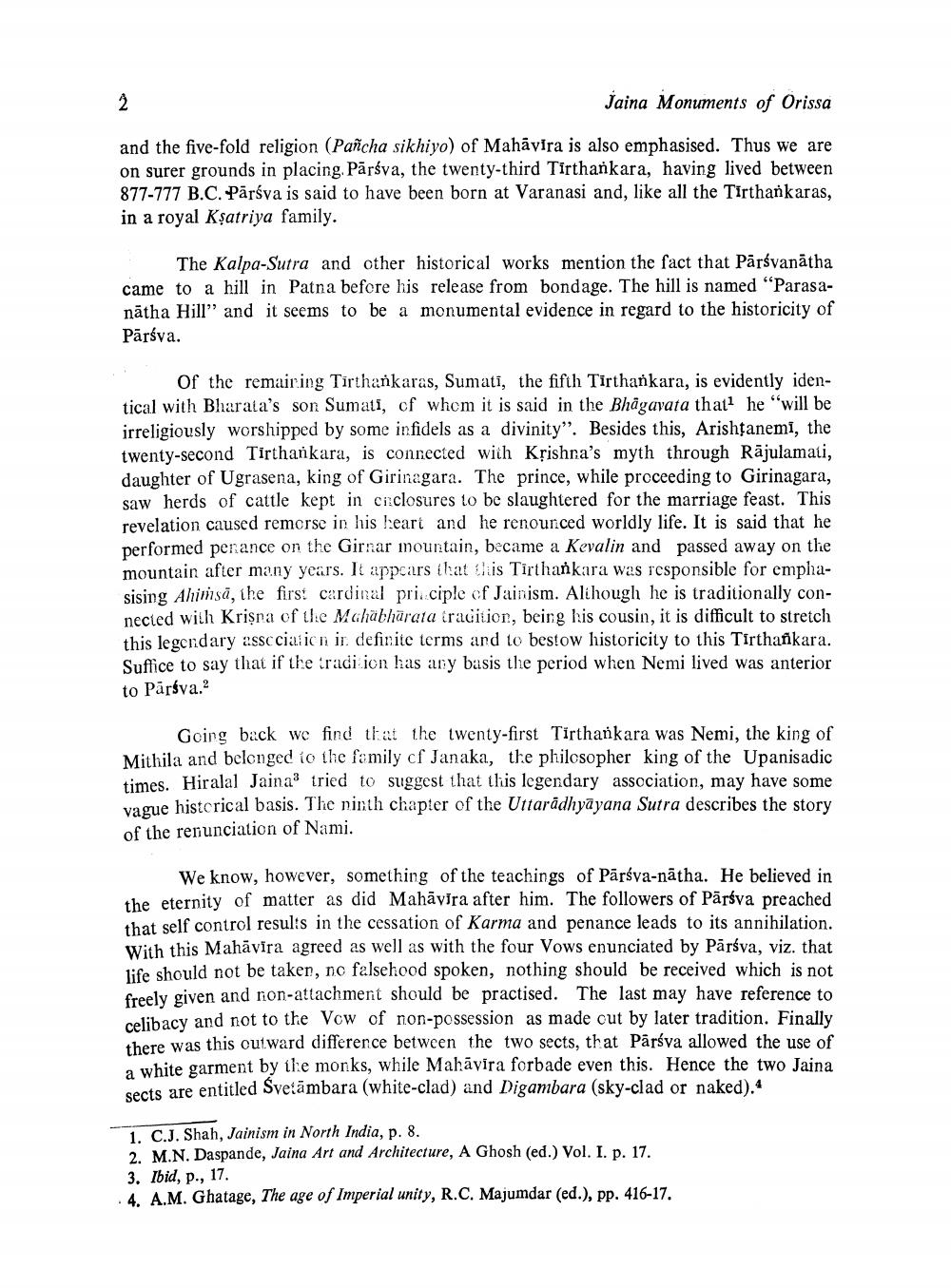________________
Jaina Monuments of Orissa
and the five-fold religion (Pañcha sikhiyo) of Mahāvira is also emphasised. Thus we are on surer grounds in placing. Pārsva, the twenty-third Tirthankara, having lived between 877-777 B.C. Pārsva is said to have been born at Varanasi and, like all the Tirthankaras, in a royal Ksatriya family.
The Kalpa-Sutra and other historical works mention the fact that Pārsvanātha came to a hill in Patna before his release from bondage. The hill is named "Parasanātha Hill" and it seems to be a monumental evidence in regard to the historicity of Pārsva.
of the remairing Tirthankaras, Sumati, the fifth Tirthankara, is evidently identical with Bharata's son Sumati, cf whom it is said in the Bhagavata that he will be irreligiously worshipped by some infidels as a divinity". Besides this, Arishtanemi, the twenty-second Tirthankara, is connected with Kệishna's myth through Rājulamati, daughter of Ugrasena, king of Girinagara. The prince, while proceeding to Girinagara, saw herds of cattle kept in ciclosures to be slaughtered for the marriage feast. This revelation caused remorse in his heart and he renounced worldly life. It is said that he performed penance on the Girnar mountain, became a Kevalin and passed away on the mountain after many years. It appcars that duis Tirthankara was responsible for emphasising Ahirsā, the first cardinal principle of Jainism. Although he is traditionally connected with Krişna of the Mahabharata tradition, being his cousin, it is difficult to stretch this legendary assc ciaticn ir definite terms and to bestow historicity to this Tirthafikara. Suffice to say that if the traci ion has any basis the period when Nemi lived was anterior to Pārsva.?
Going back we find that the twenty-first Tirthankara was Nemi, the king of Mithila and belonged to the family cf Janaka, the philosopher king of the Upanisadic times. Hiralal Jainatried to suggest that this legendary association, may have some vague historical basis. The ninth chapter of the Uttarādhyāyana Sutra describes the story of the renunciation of Nami.
We know, however, something of the teachings of Pārsva-nātha. He believed in the eternity of matter as did Mahāvira after him. The followers of Pārsva preached that self control results in the cessation of Karma and penance leads to its annihilation. With this Mahāvira agreed as well as with the four Vows enunciated by Paráva, viz. that life should not be taken, no falsehood spoken, nothing should be received which is not freely given and non-attachment should be practised. The last may have reference to celibacy and not to the Vow of non-possession as made out by later tradition. Finally there was this outward difference between the two sects, that Pārsva allowed the use of a white garment by the monks, while Mahāvira forbade even this. Hence the two Jaina
cts are entitled Svetāmbara (white-clad) and Digambara (sky-clad or naked).
1. C.J. Shah, Jainism in North India, p. 8. 2. M.N. Daspande, Jaina Art and Architecture, A Ghosh (ed.) Vol. I. p. 17. 3. Ibid,p., 17. 4. A.M. Ghatage, The age of Imperial unity, R.C. Majumdar (ed.), pp. 416-17.




